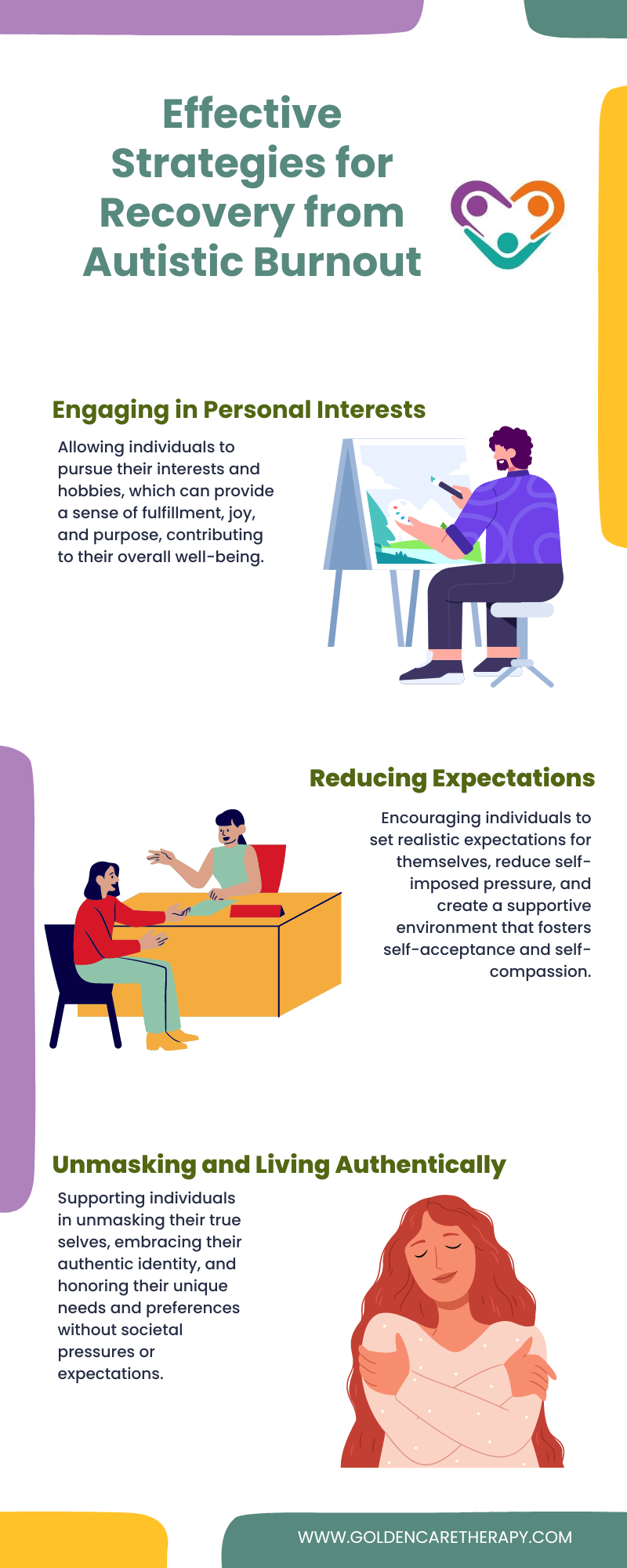
Table of Contents
Autism burnout can feel overwhelming, like a mental and physical exhaustion that seeps into everyday life. It can leave someone feeling drained and unable to cope with tasks or normally manageable situations.
The duration of autism burnout varies from person to person, and there isn’t a set timeline. For some, it might last a few days; for others, it can linger for weeks or even longer.
Understanding how long it lasts often depends on the individual’s circumstances, support systems, and recovery strategies.
How Long Does Autism Burnout Last?
Autism burnout can vary greatly in duration, depending on individual factors like the person’s support system, coping mechanisms, and the severity of their burnout. For some, it may last only a few days or weeks, while for others, it can stretch into months.
Burnout happens when an autistic individual becomes overwhelmed by prolonged stress, sensory overload, or the need to mask their autistic traits. This state of exhaustion, both mental and physical, makes it hard to function in daily life.
Recovery often requires time, rest, and a reduction in overwhelming demands to allow the body and mind to heal.
The length of autism burnout is also influenced by the availability of supportive environments and self-care practices. Effective strategies like reducing sensory input, avoiding stressors, and practicing self-compassion can help shorten the burnout period.
However, if the individual is in an unsupportive environment or lacks understanding from others, burnout may persist for longer.
A key factor in recovery is recognizing the early signs of burnout and taking proactive steps to rest and recharge before the exhaustion deepens.

Impact of Autistic Burnout
Autistic burnout can have profound effects on mental health and real-life circumstances, impacting individuals on multiple levels.
If chronic, autistic burnout can lead to significant mental health challenges. It can result in suffering in both mental and physical health, contributing to low morale and a pessimistic attitude if not addressed promptly.
The toll that burnout takes on an individual’s mental well-being can be immense, leading to feelings of overwhelm, exhaustion, and a sense of being unable to cope with daily challenges.
During burnout, individuals may experience a loss of function, exhaustion, and reduced tolerance to stimuli. This state of emotional and physical fatigue can persist for an extended period, typically lasting 3 months or more.
The impact on mental health can manifest in various ways, including increased anxiety, depression, and heightened sensitivities to sensory inputs.
However, the effects of autistic burnout also extend beyond mental health. This often results in significant real-life consequences that can disrupt various aspects of an individual’s life. Burnout can challenge the independence of autistic adults, leading to doubts about their self-sufficiency.
In severe cases, loved ones and medical professionals may question the individual’s ability to live independently during burnout, potentially suggesting a return to the family home for support.
The real-life consequences of autistic burnout can be far-reaching, encompassing physical decline, mental health difficulties, relationship strain, job loss, withdrawal from school, and diminishing levels of independence. These consequences can erode an individual’s quality of life and well-being, posing challenges to their overall functioning and stability.
Autistic burnout serves as a crucial reminder of the importance of early detection and intervention to prevent or mitigate these adverse effects.
Recognizing the signs of impending burnout and seeking appropriate support and resources are vital steps in safeguarding the mental health and overall well-being of individuals on the autism spectrum.
How to Manage Autistic Burnout
For individuals with autism, managing autistic burnout involves a combination of treatment approaches and strategies for recovery. It is essential to address the specific needs and challenges faced by individuals experiencing burnout to support their mental well-being and overall quality of life effectively.
Treatment for autistic burnout focuses on providing support and interventions that help individuals navigate and cope with the challenges associated with burnout while promoting recovery.
Key treatment approaches include:
- Social Withdrawal, Not Isolation: Encouraging social withdrawal without isolation, allowing individuals to focus on reducing external stressors, withdrawing from social and externally imposed demands, and engaging in self-care activities.
- Quality Social Connections: Spending quality time with people one enjoys and connecting with those who can provide meaningful social support, which plays a vital role in promoting emotional well-being and recovery.
- Mindfulness Practices: Engaging in mindfulness and other self-care techniques to help individuals listen to their body’s needs, reduce anxiety, and enhance emotional regulation during the recovery process.
In addition to treatment approaches, implementing strategies for recovery is essential to facilitate the healing process and support individuals in regaining their well-being and functionality.
Some effective strategies for recovery from autistic burnout include:

Recovery from autistic burnout is a gradual process that requires patience, understanding, and tailored support. By combining treatment approaches with effective strategies for recovery, individuals can navigate through burnout, enhance their mental health, and improve their overall quality of life.
Building a supportive network, embracing self-care practices, and seeking professional guidance when needed are integral steps in the journey toward recovery from autistic burnout.
Final Thoughts
In the end, how long autism burnout lasts can vary, but with the right support, self-care, and patience, recovery is always possible. Taking small steps, listening to your body, and seeking help when needed can make a big difference.
Remember, burnout doesn’t define you—it’s just a temporary part of the journey, and brighter days are ahead. If you or a loved one are seeking personalized support to manage burnout, consider the resources available through specialized ABA services. At our ABA center in New Jersey, New York, Georgia, and Indiana, we offer tailored programs that address the unique needs of individuals on the autism spectrum.
For compassionate, expert care, contact us at Golden Care Therapy today, and let us guide you toward a brighter future.
Sources:
- Disability Rights in Indiana’s Device Policy Shift - October 17, 2024
- Indiana’s Boys & Girls Clubs Partner with UChicago - October 17, 2024
- Navigating Autism in Indiana’s Education System - October 17, 2024
